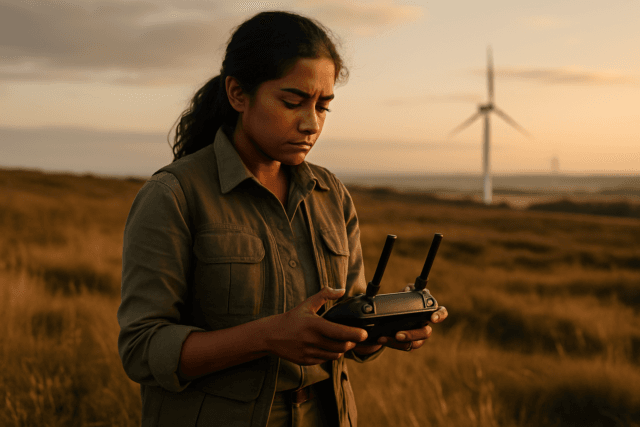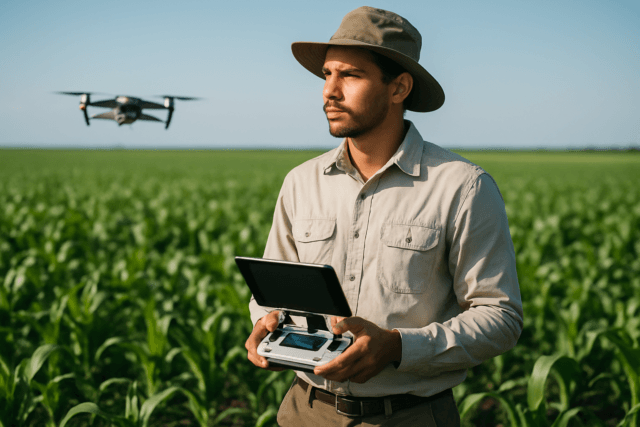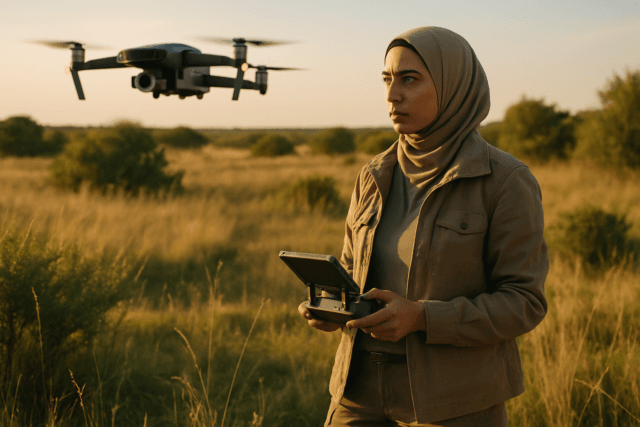The sky is no longer the limit for infrastructure inspection. Drones, or Unmanned Aerial Vehicles (UAVs), have revolutionized how we monitor vital assets like bridges, power lines, and buildings, offering unprecedented efficiency, cost-effectiveness, and safety benefits. Equipped with high-resolution cameras, thermal imaging, and LiDAR systems, drones can capture detailed visual and thermographic data from hard-to-reach or hazardous locations, leading to more accurate assessments and proactive maintenance. However, this surge in data collection capability also brings a critical challenge: safeguarding the privacy of individuals and sensitive information inadvertently captured during these operations.
Balancing the undeniable advantages of drone inspections with the fundamental right to privacy requires a comprehensive and proactive approach. This involves navigating complex legal frameworks, implementing robust technical safeguards, and adhering to strict ethical guidelines to build public trust and ensure responsible drone deployment.
The Transformative Power of Drone Inspections
Drones offer a compelling alternative to traditional inspection methods, which often involve manual labor in dangerous environments, scaffolding, or costly manned aircraft. Their ability to swiftly cover vast or intricate structures provides real-time data crucial for identifying potential issues before they escalate into emergencies.
Key Benefits of Drone Inspections:
- Enhanced Safety: By removing human inspectors from hazardous locations like great heights or toxic environments, drones significantly reduce risks of accidents and injuries.
- Cost-Effectiveness: Drones can complete inspections in a fraction of the time and at a lower cost compared to conventional methods, reducing operational expenses and downtime.
- Efficiency and Speed: Drones can rapidly collect vast amounts of high-quality data, accelerating inspection processes and enabling quicker decision-making.
- Superior Data Quality: Equipped with advanced sensors, drones capture high-resolution images, videos, and 3D models, providing detailed insights for analysis. This includes thermal images to identify heat anomalies and LiDAR for precise measurements and 3D mapping.
- Access to Difficult Areas: Drones can reach areas that are inaccessible or dangerous for human inspectors, such as the undersides of bridges or elevated components of power grids.
Navigating the Privacy Landscape in Drone Operations
Despite their benefits, the public harbors significant privacy concerns regarding drones, especially when they operate near residential areas or capture images without explicit consent. The data collected, even for infrastructure inspection, can inadvertently include personally identifiable information (PII) such as individuals’ faces, license plates, or private property details. Addressing these concerns is paramount for the continued and ethical adoption of drone technology.
Legal and Regulatory Frameworks
The legal landscape for drone data privacy is complex and constantly evolving, with regulations varying by jurisdiction.
- General Data Protection Regulation (GDPR): In the European Union, GDPR imposes strict requirements on the collection and processing of personal data, directly applying to drone operations where identifiable personal data is gathered. Key GDPR principles include lawfulness, fairness, transparency, purpose limitation, data minimization, accuracy, storage limitation, and data security. Explicit consent may be required when capturing personal data, especially sensitive information.
- Federal Aviation Administration (FAA) Regulations: In the U.S., the FAA primarily regulates drone operations for safety and airspace management under Part 107. While focused on security, the FAA’s Remote ID Rule also touches upon privacy by limiting the accessibility of certain identification data. While there isn’t a comprehensive federal privacy law specifically for drones in the U.S., general privacy laws still apply, and the FAA encourages adherence to the National Telecommunications and Information Administration’s (NTIA) voluntary best practices for privacy, transparency, and accountability.
- State and Local Laws: Many states and municipalities have enacted their own drone laws, often including provisions for privacy and surveillance, which can vary significantly. For example, some states prohibit capturing images or recordings of individuals in private settings without consent.
- NIST Privacy Framework and ISO/IEC 27701: These frameworks provide guidelines for privacy-enhancing technologies and privacy information management, applicable to drone operations.
Technical Safeguards for Data Privacy
Implementing robust technical measures is crucial to protect drone-collected data throughout its lifecycle, from acquisition to storage and analysis.
Data Minimization and Collection Control
The principle of data minimization dictates that only data necessary for the intended purpose should be collected.
- Pre-flight Planning: Detailed flight plans should be developed to define the inspection area precisely, avoiding unnecessary capture of surrounding private properties or individuals.
- Geofencing: Drones can be equipped with geofencing technology to restrict them from entering sensitive or restricted areas, thereby protecting privacy in specific locations.
- Software Features: Implement software that limits data collection, such as automatically turning off recording once the drone leaves its predetermined path.
Data Anonymization and Pseudonymization
Once data is collected, techniques to de-identify personal information are essential.
- Automated Anonymization: Program drones or post-processing software to automatically detect and obscure human faces, license plates, and other identifiable elements through blurring, hiding, or blanking. Research is ongoing to develop advanced AI-driven methods for more sophisticated face and vehicle anonymization that preserves semantic information while ensuring anonymity.
- Data Aggregation: Combining anonymization with data aggregation techniques can further protect privacy while retaining data utility for analysis.
- Tokenization: For highly sensitive data like GPS coordinates, tokenization can be used to replace actual data with non-sensitive substitutes, protecting against potential leaks.
Secure Data Storage and Management
Protecting stored drone data from unauthorized access or breaches is paramount.
- Encryption: Implement strong encryption for data both during transfer and while in storage. This includes using advanced algorithms like AES 256-bit encryption for cloud storage and quantum-resistant algorithms for communication protocols.
- Cloud Storage: Leveraging secure, encrypted cloud environments (e.g., AWS, Google Workspace) offers scalability, organization, and advanced data protection features like encryption, access controls, and ransomware protection. Cloud platforms often provide automatic backups and geographic redundancy.
- Access Controls: Implement role-based access control (RBAC) to ensure that only authorized personnel can access specific drone data. This includes multi-factor authentication (MFA) and logging/monitoring internal file access for unauthorized activity.
- Data Retention Policies: Establish clear data retention policies outlining how long data will be stored and when it will be deleted, complying with relevant data protection regulations and minimizing risk.
- Secure Data Transfer: Prioritize securely transferring data from drone storage media to robust systems, ideally with immediate backups to prevent loss.
Cybersecurity Measures
A strong cybersecurity posture is vital for drone systems.
- Secure Communication Protocols: Ensure data transmitted between drones and ground stations remains confidential using end-to-end encryption.
- Device Security: All devices used for field operations (laptops, tablets) should be password-protected, encrypted, and regularly updated with security patches.
- Network Security: Utilize firewalls, antivirus protection, and Virtual Private Networks (VPNs) for remote access to internal systems.
- Regular Audits: Conduct regular security audits to assess and strengthen security measures.
Ethical Operational Practices and Transparency
Beyond legal and technical requirements, ethical considerations and public transparency are crucial for building trust.
Transparency and Public Engagement
- Clear Privacy Policies: Drone operators must have clear, understandable privacy policies outlining data collection, use, and storage.
- Public Education: Inform the public about the necessity of drone inspections, the specific purpose of data collection, and the privacy safeguards in place.
- Stakeholder Engagement: Involve privacy advocates, industry experts, and the public in developing drone operation policies.
- Transparency Reports: Consider regular publication of anonymized data usage reports to build public trust.
Operator Training and Accountability
- Data Protection Training: All personnel involved in drone operations must be trained on data protection laws, regulations, and best practices for handling personal data.
- Ethical Use of Data: Ensure that even legally and securely collected data is used ethically and responsibly, recognizing privacy as a fundamental human right.
- Informed Consent: Where feasible, obtain informed consent before collecting personal data, especially in public spaces where individuals might expect privacy. Avoid flying over private residences without owner consent.
Future Directions in Drone Data Privacy
As drone technology advances, so too will the methods for protecting privacy. Emerging technologies like homomorphic encryption, which allows computations on encrypted data without decryption, and federated learning, which trains AI models on decentralized data, show promise for revolutionizing privacy-preserving data processing. Blockchain-based authentication and quantum-resistant cryptography are also being explored for secure drone identification and data protection.
Conclusion
The integration of drones into infrastructure inspection offers profound benefits, but it also necessitates a rigorous commitment to data privacy. By meticulously adhering to evolving legal and regulatory frameworks, deploying advanced technical safeguards for data minimization, anonymization, and security, and fostering transparent, ethical operational practices, organizations can confidently leverage drone technology while respecting individual privacy. This multi-faceted approach is not merely about compliance; it’s about building enduring trust and ensuring that the future of drone innovation serves society responsibly.





